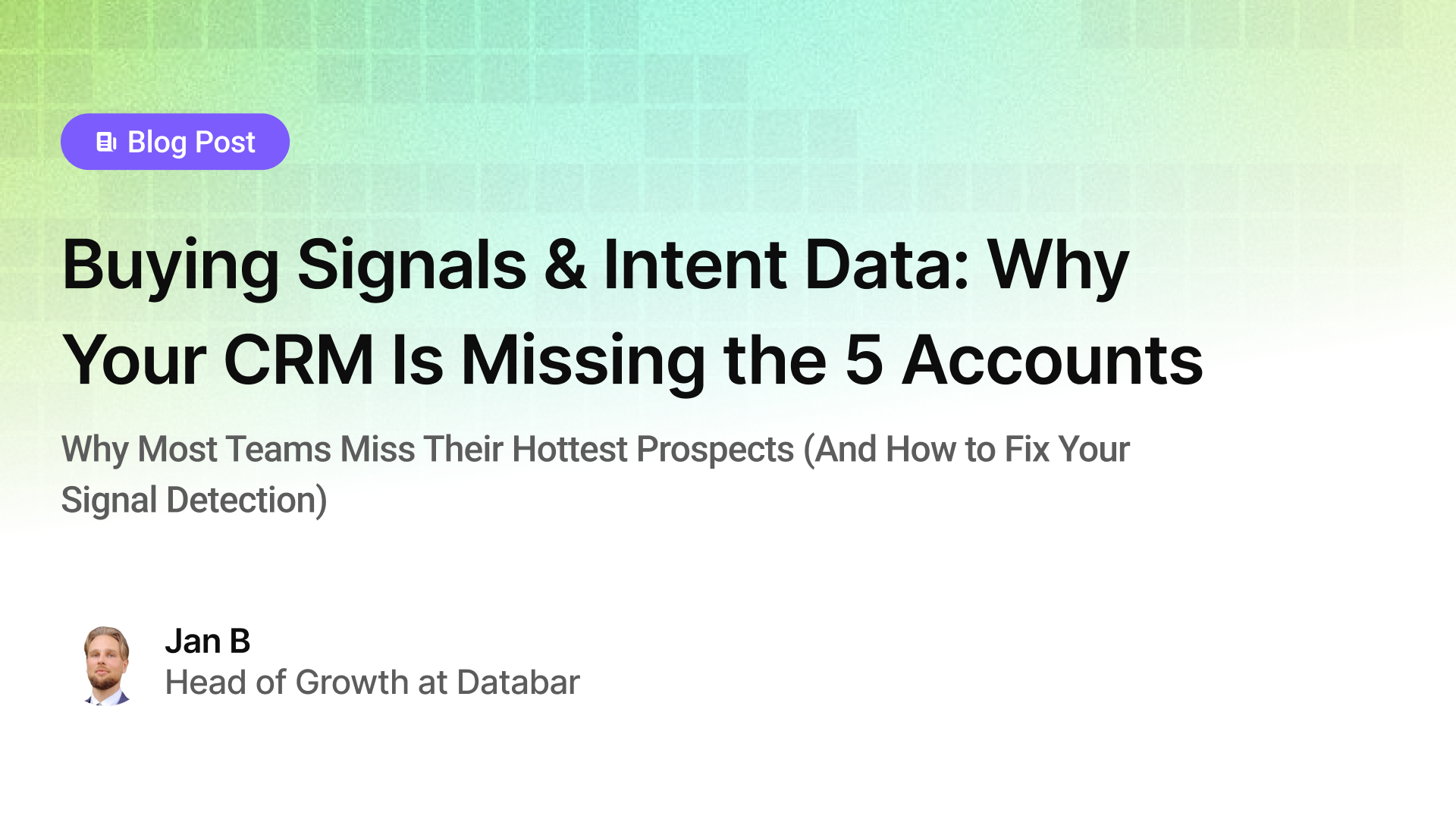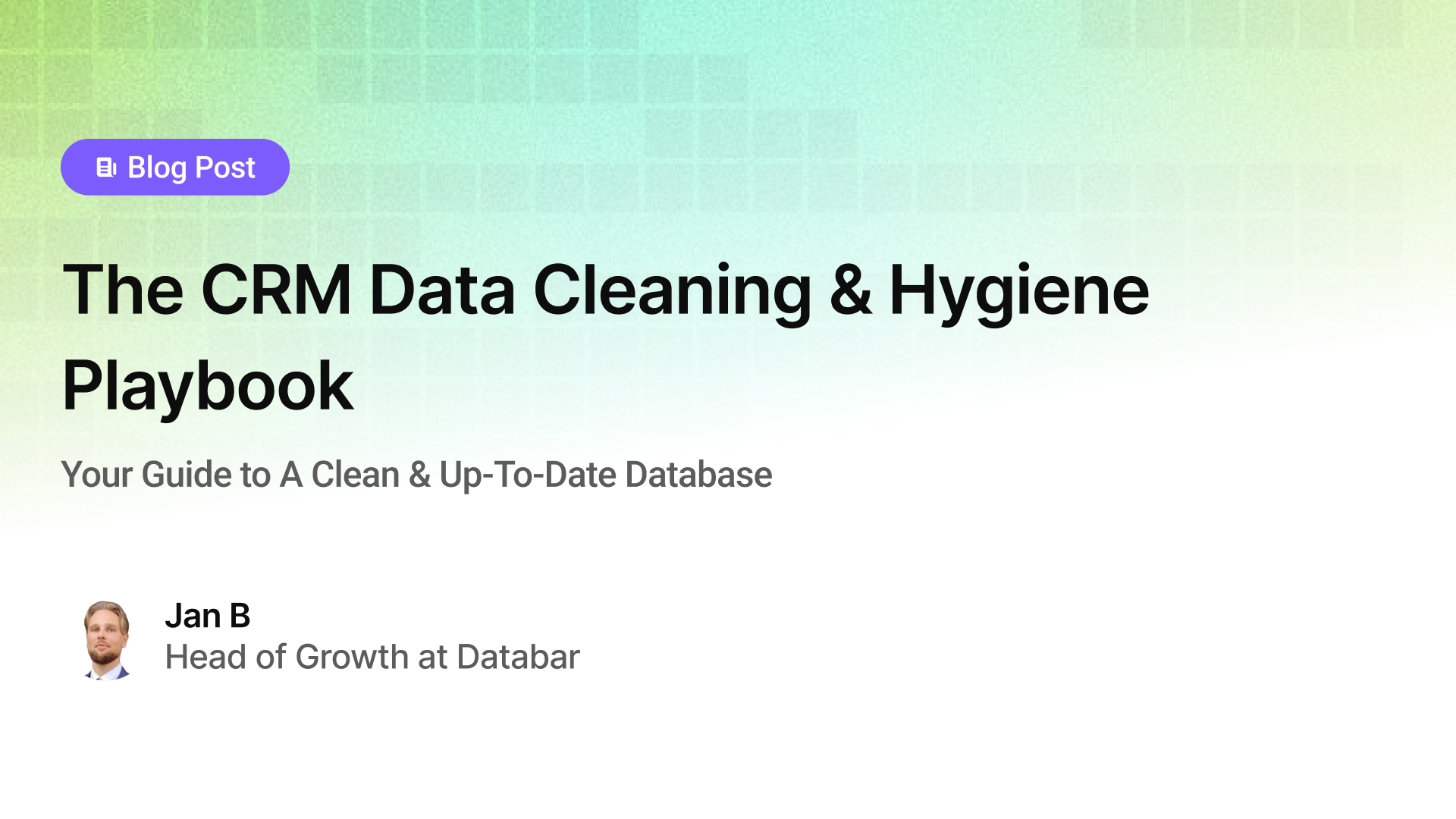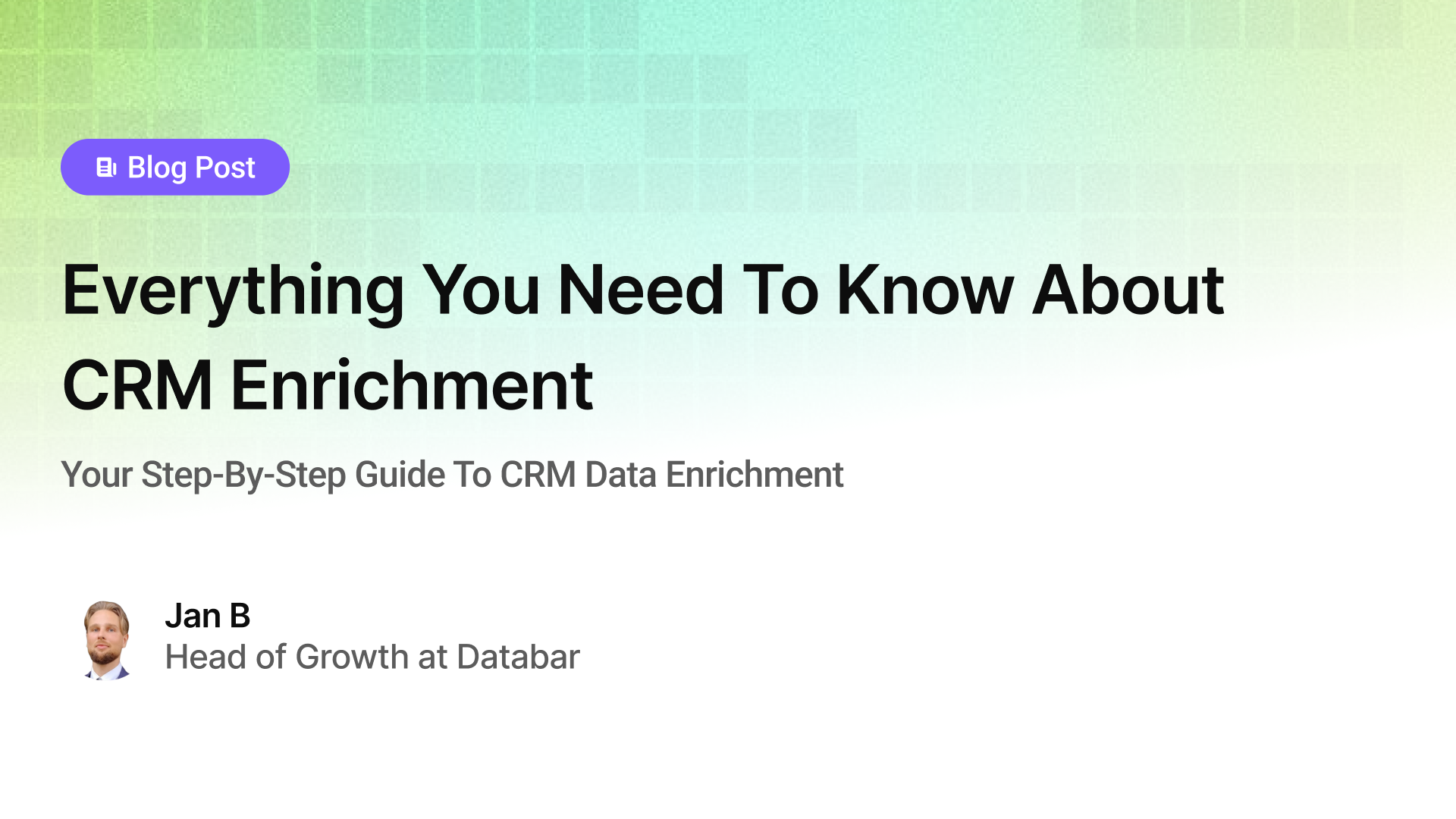5 Creative Ways to Use APIs in Your Marketing Campaigns 2025
Innovative API Applications for Effective Marketing Strategies
Blogby JanDecember 11, 2024
With over 70% of B2B companies struggling to generate qualified leads consistently, it's clear that traditional approaches aren't cutting it anymore. But here's the game-changing truth that top performers know: the secret to exceptional lead generation lies to a great extent in how creatively you leverage your API stack.
In this comprehensive guide, we're going to pull back the curtain on the strategies that are transforming standard marketing campaigns into lead-generating powerhouses. You'll learn exactly how industry leaders are implementing APIs to achieve response rates as high as 42% and conversion rates that would make your sales team dance with joy.
What You'll Master in This Guide
Before we dive deep into the strategies that are boosting lead generation, let's be clear about what you're about to learn:
- How to build and implement a multi-API stack that delivers personalized campaigns at scale
- Advanced techniques for signal-based lead scoring that actually predict buying intent
- Step-by-step implementation strategies backed by real-world success stories
- Concrete ROI numbers from successful implementations
- Expert tips for optimizing your API stack without blowing your budget
The New Landscape of Lead Generation
Let's face it: the days of spray-and-pray lead generation are over. Modern buyers expect personalized experiences, and if you're still relying on generic approaches, you're leaving money on the table. This is where a strategic API implementation becomes your secret weapon.
Why Traditional Methods Are Failing
Traditional lead generation methods typically suffer from three critical flaws:
- They lack real-time personalization capabilities
- They can't scale without sacrificing quality
- They miss crucial buying signals that indicate real intent
The good news? These are exactly the problems that a well-implemented API stack solves. Let's look at how industry leaders are doing it.
1. Building Your Strategic API Foundation
Before you can implement powerful strategies, you need to understand the components of a modern API stack. Think of it as building a high-performance engine – every part needs to work in harmony for maximum output.
The Core Components of a Modern API Stack
Your foundation should include four essential types of APIs:
- Technology Monitoring APIs: These are your early warning system, alerting you to changes in your target accounts' tech stacks that could indicate buying opportunities.
- Contact Enrichment APIs: These fill in the gaps in your contact data, ensuring you're reaching out to the right decision-makers with accurate information.
- Intent Data APIs: Think of these as your crystal ball, helping you identify accounts showing real buying signals before they even reach out to vendors.
- Company Information APIs: These provide the context you need to personalize your outreach at scale.
2. Five Powerful API Implementation Strategies That Actually Work
Strategy #1: Trigger-Based Personalization at Scale
Forget everything you know about basic mail merges and template personalization. Forward-thinking companies are using a sophisticated combination of APIs to create hyper-personalized campaigns that feel like they were crafted individually.
Here's how one B2B software company achieved a 312% increase in response rates:
The Implementation Process:
- They set up continuous monitoring of target accounts' technology stacks using TheirStack API
- They layered in growth signals from PredictLeads to identify companies in expansion mode
- They integrated Hunter.io for real-time decision-maker identification
- They created automated triggers that launched personalized campaigns detecting specific signals
The results speak for themselves: their response rates jumped from a standard 2.3% to an impressive 8.9% on cold outreach. But here's what's really interesting – the quality of those responses improved dramatically as well.
Strategy #2: Signal-Based Lead Scoring That Actually Works
If your lead scoring system still relies primarily on website visits and email opens, you're missing out on the most powerful predictors of buying intent. Modern businesses are moving beyond basic behavioral scoring to what we call "Momentum Scoring."
Here's the step-by-step process:
- Technology Implementation Signals: Monitor changes in your target accounts' tech stacks, particularly removals of competitor products or complementary technology additions.
- Team Growth Metrics: Track department expansion, new role creation, and leadership changes that could indicate new project initiatives.
- Digital Footprint Expansion: Monitor changes in digital infrastructure that could signal upcoming technology investments.
- Intent Data Signals: Layer in data about research activities, content consumption, and competitor comparisons.
Strategy #3: Competitive Displacement Campaigns That Convert
Here's where API implementation gets really interesting. Instead of casting a wide net, leading companies are using APIs to identify and target accounts that are most likely to switch vendors. The approach is surgical and the results are impressive.
One B2B SaaS company built a system, which monitors multiple data points through integrated APIs. Here's exactly how they did it:
- Satisfaction Score Tracking: They use the G2 API to monitor satisfaction scores over time, flagging accounts showing declining satisfaction with current vendors.
- Support Forum Activity: Their system tracks increases in support ticket volume and negative sentiment in support interactions.
- Tech Stack Monitoring: Using TheirStack API, they track when companies add or remove competitive solutions.
- Renewal Window Identification: They overlay contract renewal data to time their outreach perfectly.
The magic happens when accounts show three or more "switch signals" within a 30-day window. When this occurs, their system automatically triggers a personalized outreach campaign that addresses the specific pain points indicated by the signals.
Strategy #4: Dynamic Content Personalization Through API Integration
If you're still using basic {{first_name}} personalization, you're leaving money on the table. Leading businesses are using API integrations to create deeply personalized content that adapts in real-time to visitor profiles.
Here's the framework that's delivering results:
- Company Technographics: Pull real-time technology stack data to understand what solutions prospects are already using.
- Growth Stage Indicators: Layer in funding data and growth metrics to gauge company maturity.
- Digital Maturity Score: Calculate sophistication levels based on technology adoption patterns.
- Intent Signals: Overlay recent research, company news and buying behavior data.
One company implementing this approach saw their form submission rates increase by 180%. Here's how they personalize content based on visitor profiles:
- Enterprise visitors see ROI calculators and enterprise case studies
- Startups and mid-market companies see pricing comparisons and quick-start guides
Strategy #5: Automated Buyer Committee Mapping
Most campaigns fail because they target incomplete buying committees. The solution? Using APIs to automatically map and engage entire buying groups.
Here's the process that's boosting enterprise sales approaches:
- Decision-Maker Pattern Analysis: Use Hunter.io to identify common organizational structures and reporting relationships.
- Role Mapping: Integrate with LinkedIn's API to understand reporting structures and influence patterns.
- Engagement Tracking: Monitor which committee members engage with what content.
- Role Change Monitoring: Track job changes and promotions that might affect the buying committee.
Implementation Guide: Making It Work in Your Organization
Theory is great, but execution is everything. Here's your week-by-week guide to implementing these strategies in your organization.
Phase 1: Foundation (Weeks 1-2)
Week 1 is all about laying the groundwork. Start by:
- Auditing Your Current Stack: Document your existing tools and identify gaps that need to be filled.
- Selecting Your Primary Use Case: Choose one high-impact scenario to focus on initially.
- Setting Up Core API Integrations: Begin with the essentials - technology monitoring and contact enrichment.
During Week 2, focus on:
- Building Basic Automation: Create your first automated workflows.
- Testing Data Quality: Verify the accuracy and completeness of your data.
- Training Your Team: Ensure everyone understands how to use the new tools.
Common Implementation Challenges and How to Overcome Them
No implementation is without its hurdles. Here are the most common challenges companies face and proven solutions:
Challenge #1: Data Quality Issues
Many organizations struggle with inconsistent or incomplete data across different APIs. Here's how to fix it:
- Implement strict data validation rules
- Use multiple data sources for verification
- Create automated cleanup processes
- Regular data audits and maintenance
Measuring Success: The Metrics That Actually Matter
While it's tempting to track every possible metric, successful implementations focus on these key indicators:
- Response Rate Delta: Track the improvement in response rates compared to your baseline.
- Qualification Speed: Measure how quickly leads move through your qualification process.
- Meeting Conversion Rate: Monitor the percentage of responses that convert to meetings.
- Cost Per Qualified Opportunity: Calculate the true cost of generating qualified opportunities.
- Campaign ROI: Measure the return on your API investment.
Setting up these Creative Ways to Use APIs requires data from multiple APIs. Through databar.ai, you can access 100+ data sources through a single integration, making implementation significantly faster and more reliable. Book a demo today to see how other companies are using Databar to deliver exceptional results.
Related articles

Buying Signals & Intent Data: Why Your CRM Is Missing the 5 Accounts
Why Most Teams Miss Their Hottest Prospects (And How to Fix Your Signal Detection)
by Jan, October 06, 2025

Lead Scoring & Account Segmentation: Why Most CRMs Get This Backward (And How to Fix It)
How to build a system that tells your team who to call, when, and why
by Jan, October 06, 2025

The CRM Data Cleaning & Hygiene Playbook
Your Guide to A Clean & Up-To-Date Database
by Jan, October 04, 2025

Everything You Need To Know About CRM Enrichment
Your Step-By-Step Guide To CRM Data Enrichment
by Jan, October 03, 2025